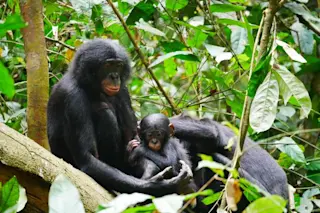Kópipi! Kópipi! In jungle on the Pacific island of Bougainville, a man from the village of Rotokas was excitedly pointing out the most beautiful birdsong I had ever heard. It consisted of silver-clear whistled tones and trills, grouped in slowly rising phrases of two or three notes, each phrase different from the next. The effect was like one of Schubert’s deceptively simple songs. I never succeeded in glimpsing the singer, nor have any of the other ornithologists who have subsequently visited Bougainville and listened spellbound to its song. All we know of the kópipi bird is that name for it in the Rotokas language and descriptions of it by Rotokas villagers.
As I talked with my guide, I gradually realized that the extraordinary music of Bougainville’s mountains included not only the kópipi’s song but also the sounds of the Rotokas language. My guide named one bird after another: kópipi, kurupi, ...














